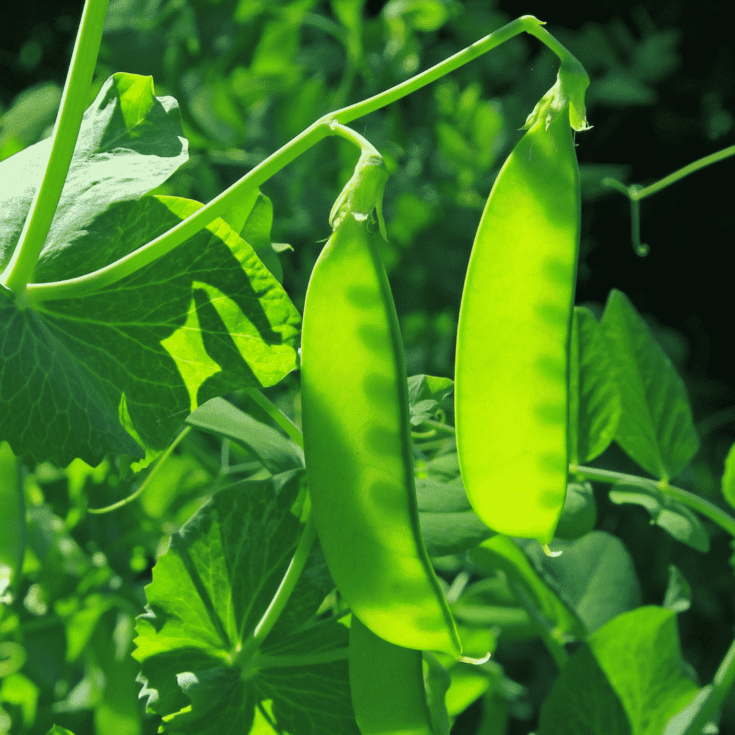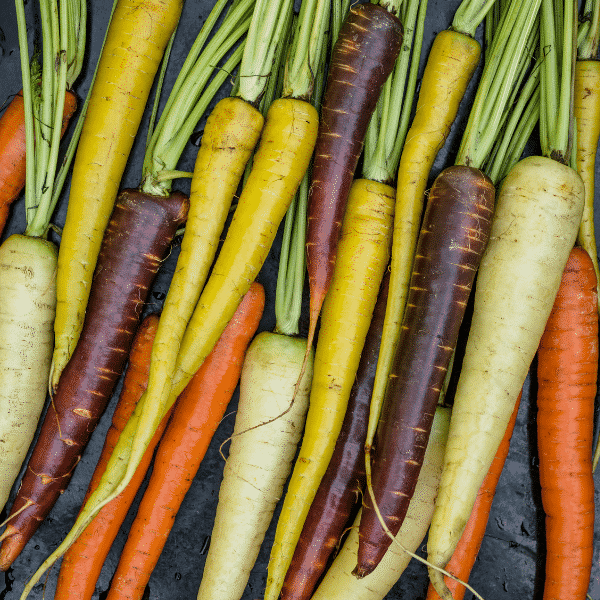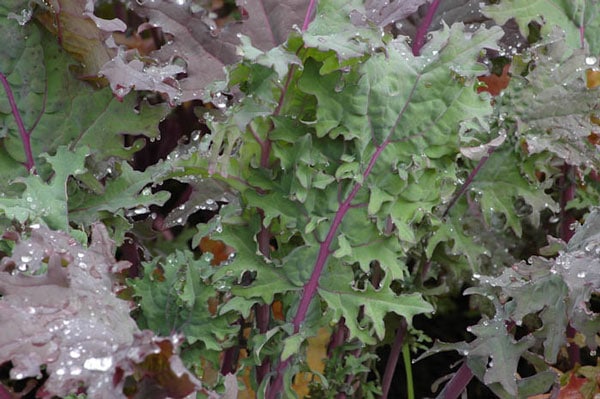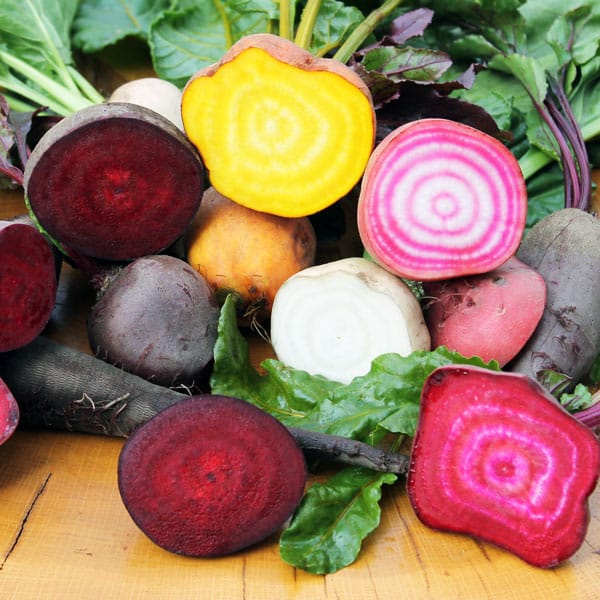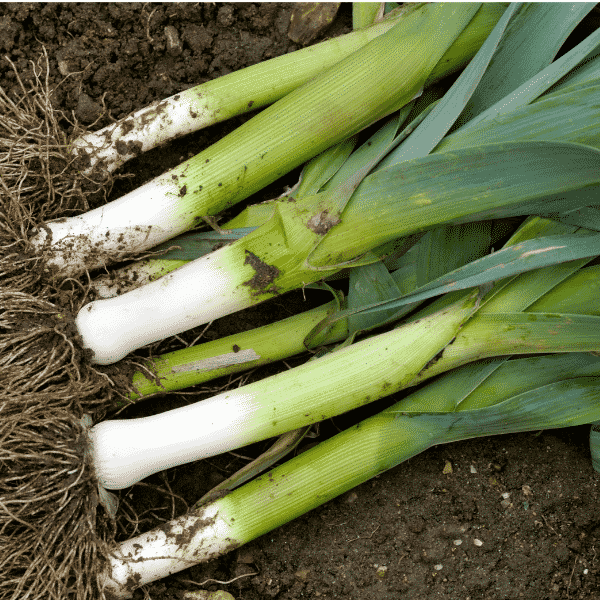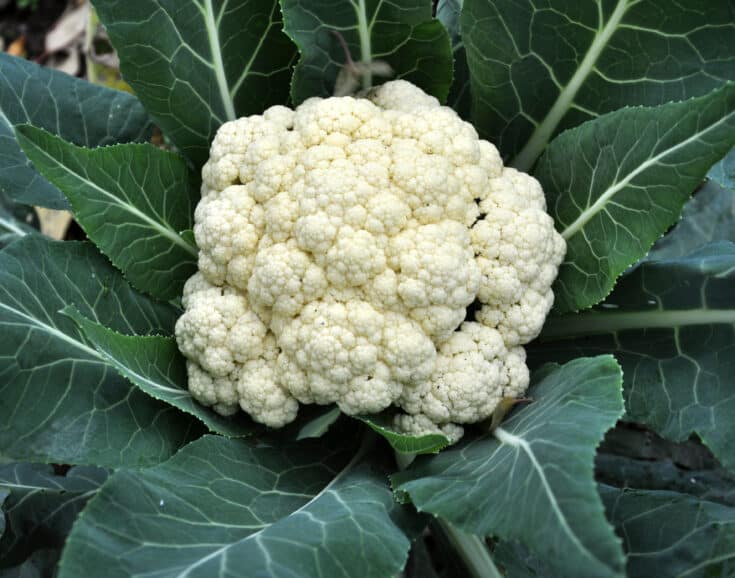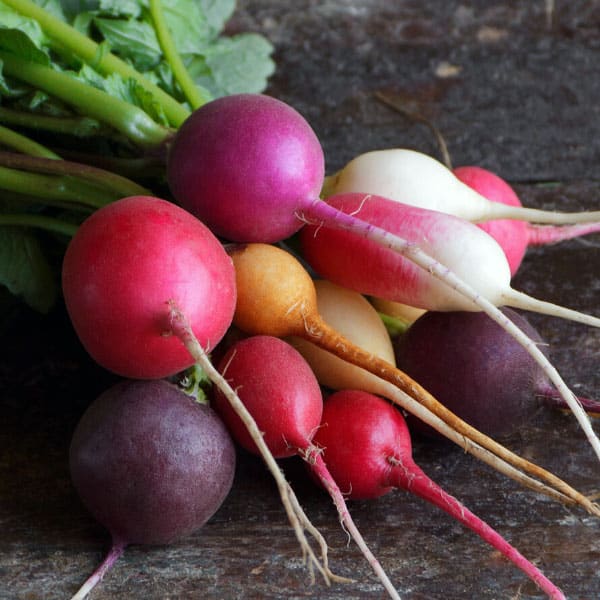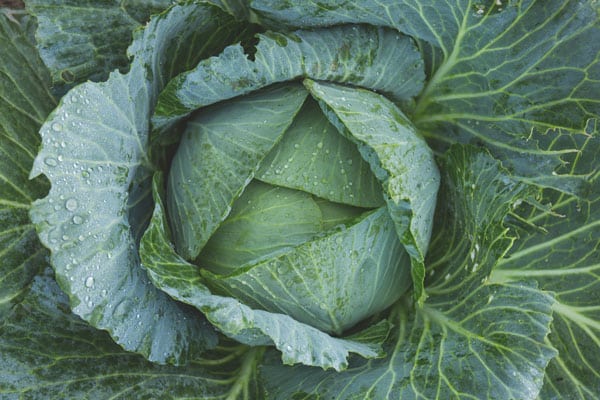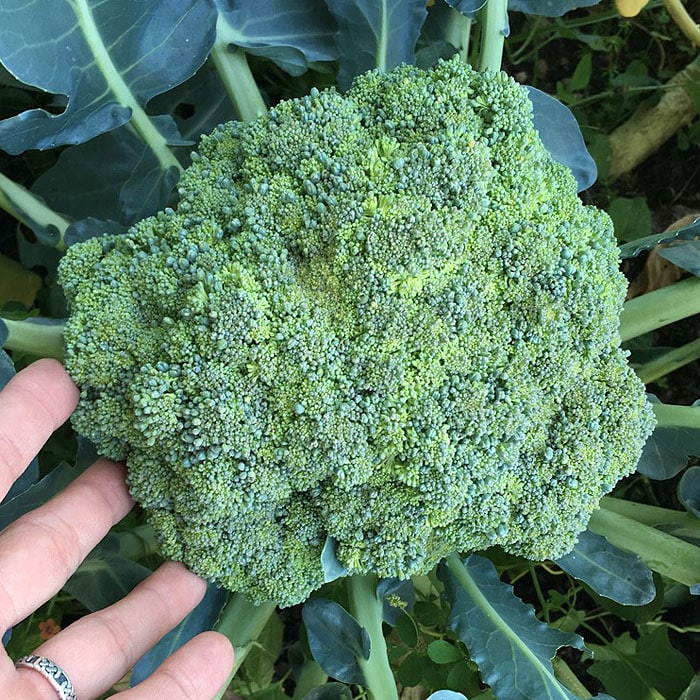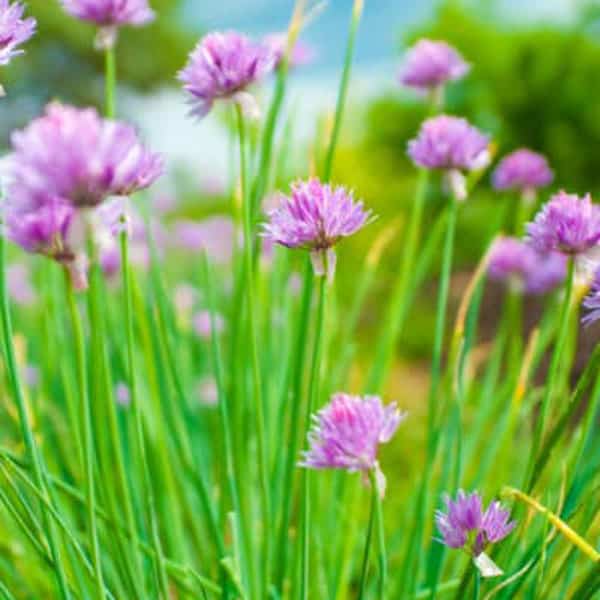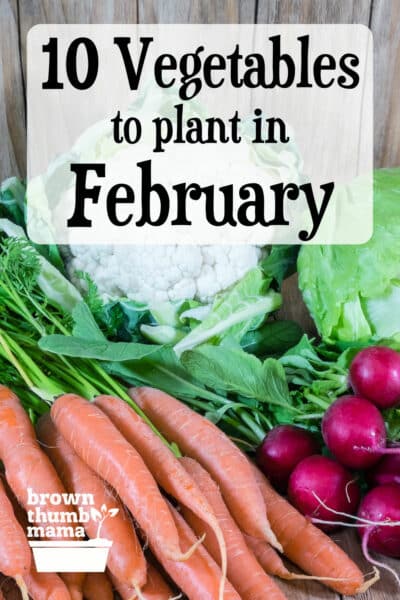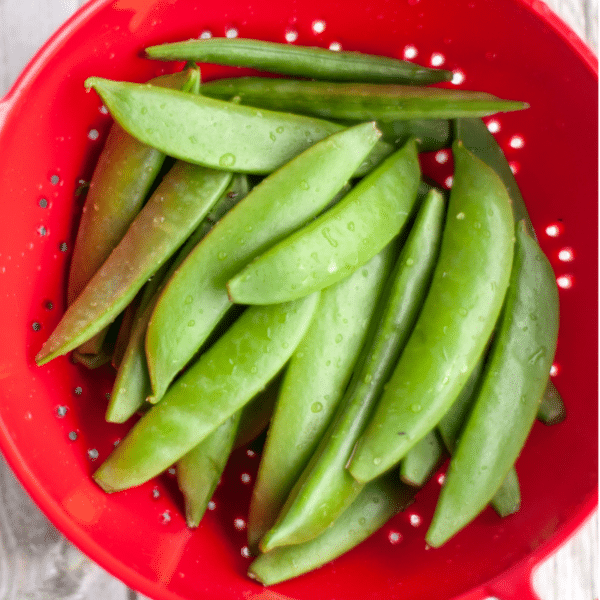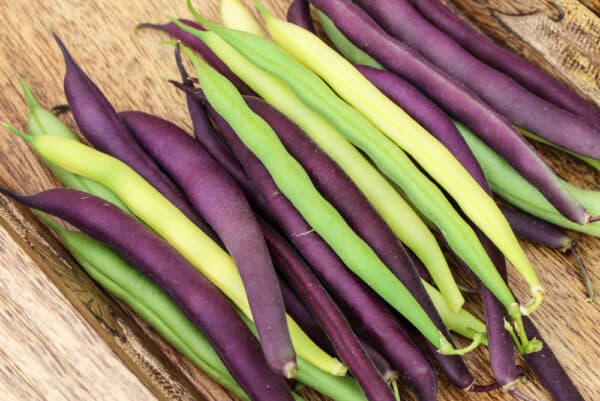This post may include affiliate links.
If you make a purchase, I'll earn a small fee at no extra cost to you.
These veggies can handle the cold. Zone 9 gardeners, here are 10 vegetables to plant in February for an amazing harvest of fresh veggies all Spring!
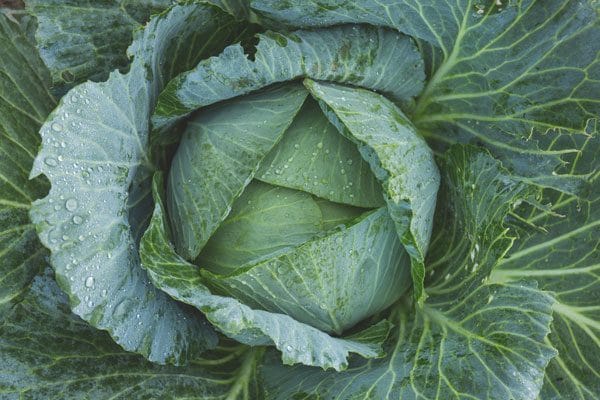
For most of us gardeners, January is spent looking through seed catalogs and planning out the majestic garden you’re going to enjoy in the spring. By February, though, your seeds have arrived and you’re itching to get them in the soil…am I right?
I know I’m in a hurry to plant vegetables and start seeds in February. Bundle up, grab some of your homemade compost and let’s get out in the garden.
~~~~~~~~~~~~
Are you a brand new gardener? Not sure what to plant and how to plant it? I can help.
Check out my Ultimate Beginning Gardener Bundle and you’ll have a great garden in no time!

~~~~~~~~~~~~
Here are 10 vegetables to plant in February, for gardeners in Zone 9.
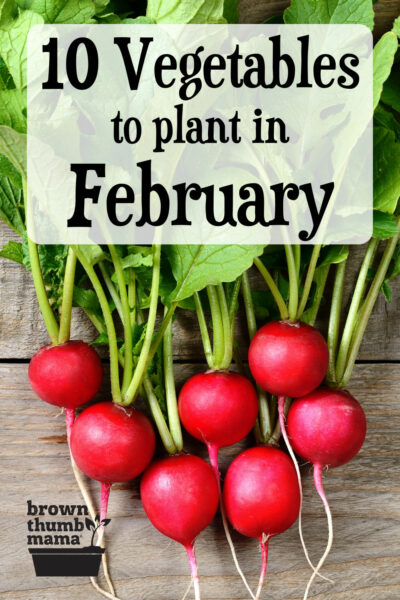
10 Vegetables to Plant in February {Zone 9}
Snow peas are a great vegetable to grow with your kids, because they’re mild in flavor and fun to eat. Our kids sit in the garden and eat them right off the plant!
Varieties: Our favorite variety is Oregon Sugar Pod II. It produces giant, tender snow peas and often sets doubles--two pea pods from each node.
Planting: Snow peas need consistent water, and fertile, loose soil with plenty of phosphorus and potassium. Here’s lots more information on planting and growing snow peas.
Recipes: If you end up getting any peas indoors before the kids eat them all, add them to a stir-fry or Homemade Orange Chicken.
There are so many different kinds of carrots! Different colors, different shapes, and yes--slightly different flavors with each. You’ll probably want to try several different kinds.
Varieties: I like Carnival Blend carrots because of their unique colors, and round Tonda di Parigi carrots for their adorable shape. Scarlet Nantes is my variety of choice for for traditional carrots.
Planting: Carrot seeds are tiny! You can either sprinkle them on the top of the soil and thin the carrots once they sprout, or use a seed dispenser to make sure they’re spaced properly. Learn more about growing carrots.
Recipe: Enjoy your garden-fresh carrots in this easy Summertime Slaw recipe.
Lots of folks make fun of kale because it’s in everything. Kale chips, kale smoothies, kale salad...the list goes on and on.
There’s a reason for this, though. One cup of kale contains more than your recommended daily value of vitamins K, A, and C. It also has lots of trace minerals, like copper, manganese, phosphorus, and selenium.
Varieties: I like Red Russian Kale, which you grow as a baby green. Cut the leaves after about 25 days and you’ll have tender, tasty kale. Then the plant will regrow for another harvest. Cool, right?
Planting: Set out kale plants in February and you’ll be harvesting your first crop of baby greens in March.
Recipe: I like to chop baby kale finely and sneak it into a salad, or add it to Homemade Fried Rice or Baked Italian Meatballs.
Fresh beets are so much better than those awful canned things we had as kids. And did you know that beets are full of fiber, potassium, folic acid, and vitamin C?
Varieties: I like this Gourmet Blend because it includes 3 different types of beets: Detroit Dark Red with deep red roots and delicious dark green tops, Chioggia with interior rings of bright pink and white, and Golden with bright yellow flesh.
Planting: Start seeds in the garden in February and harvest when roots are between 1-3 inches in diameter.
Recipes: You can't go wrong with a classic canned pickled beets recipe. They are so good!
Leek plants resemble a long, fat green onion. The white lower portion has a mild onion flavor, and the green tops are stronger tasting.
Varieties: King Richard Leeks grow quickly and are ready to harvest earlier than other types.
Planting: Direct seed in the garden, ¼ inch deep and 6 inches apart. Seedlings will sprout in 10-14 days, and you’ll harvest about 60 days after that.
Recipe: You can substitute leeks for onions in most dishes. Potato leek soup is a classic, and this version is made in the Instant Pot.
Yes, everybody is turning cauliflower into stuff like pizza crust and rice, but it's still delicious roasted, with a splash of lemon juice.
Varieties: Snowball Y cauliflower is ready to harvest in just 75 days, so you'll be eating cauliflower before you know it.
Planting: Plant your cauliflower seedlings out in the garden in February. Use these tips to keep the aphids away from your precious crop!
Recipe: Cauliflower and Butternut Squash soup is perfect for a cold winter day.
Radishes are a super easy crop to grow and are a great choice when gardening with kids.
Varieties: Radishes come in many different colors! I like Easter Egg Blend because you get red, white, rose pink, purple, and bi-color (red top, white base) radishes all in the same seed packet.
Planting: In February, plant the seeds directly in the garden. They’ll grow quickly, and you can harvest your radishes when they’re the size of large marbles (in about a month).
Recipes: I love to eat radishes on my salads or just fresh from the garden. When they're small, they're less spicy.
The biggest danger to cabbage (in my garden, anyway) is from critters like slugs and cabbage worms. Here are my favorite tricks to keep these bugs away from my precious crop.
Varieties: Copenhagen Market is my favorite cabbage to grow. It was developed in 1909 and is the standard for many varieties that were developed after it. It’s great for small gardens and container gardens.
Planting: Plant your cabbage seedlings out in the garden in February. Space them about 2 feet apart so they have room to grow.
Recipe: My favorite cabbage dish is so easy, you don’t need a recipe. Fry up diced bacon and onions in a pan. Then add chopped cabbage and stir-fry until the cabbage is just softened. Yum!
We call broccoli "happy little trees" as a tribute to Bob Ross (and as an attempt to get the kids to eat it). There's nothing like the sense of accomplishment you get from growing broccoli--it's rare in home gardens.
Varieties: Broccoli Di Cicco is my favorite--it reliably produces large heads and then continues to produce smaller offshoots after the main harvest.
Planting: Plant your broccoli seedlings directly in the garden in February, about 18 inches apart.
Recipe: Roasted Broccoli with Garlic and Parmesan is an easy recipe the kids will love.
If you like a gentle onion flavor, chives are the plant for you. Did you know that chives are a great companion plant for strawberries? Their mild onion smell keeps the bad bugs away–much safer than spraying pesticides. Learn more secrets for growing great strawberries here.
Varieties: These Organic Chive seeds are the ones my family grows with great success.
Planting: Sow chive seeds directly in the garden in February, or even try them indoors on a sunny windowsill.
Recipes: A pleasant bonus with growing chives is their beautiful flowers. Try making this Chive Blossom Vinegar with them. So cool!
Want to know what to plant every month?
Knowing which vegetables to plant in each growing season ensures your plants will thrive and give you a great harvest. Check out my Vegetable Garden Planting Schedules so you know exactly what to plant each month of the year.

